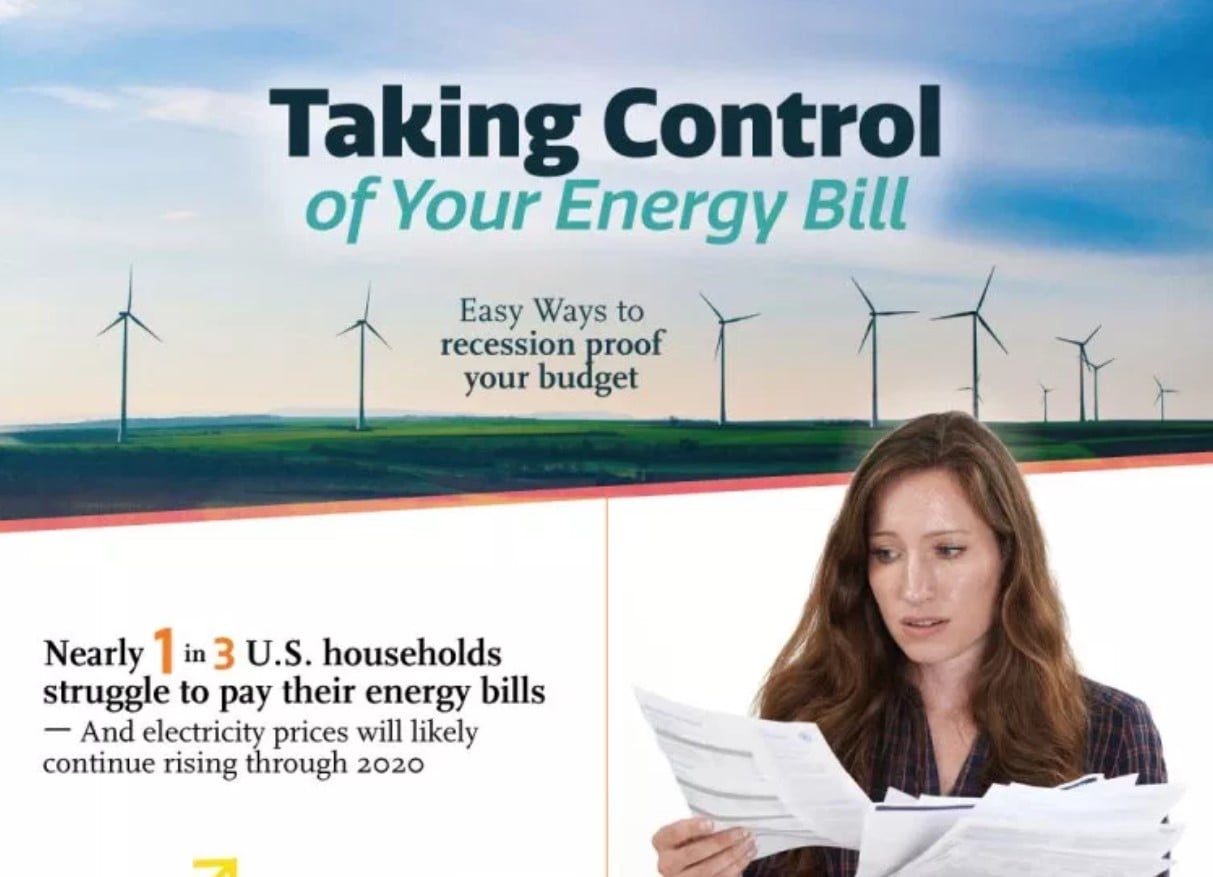Globally, more than four in five people believe that all energy should come from renewables – no wonder, as the overall costs of traditional energy is projected to keep increasing through 2020. Today, one in three American households struggle to pay their electricity bills; renewable energy sources and every saving tech offer a long term and reliable solution for our personal finances, economy, and environment.
For decades, solar panels have been on the economic and environmental radar as one of the best solutions for renewable energy, yet until now the price has remained prohibitive for many families. Nearly half of all solar panel potential in the US comes from low to middle income households and installing panels on every suitable rooftop would have the potential to generate up to 75% of all residential energy consumption. Though solar panel systems are more affordable than ever, not every household can take the leap of investing $12-$15k for a solution that will take 20 years to pay for itself. Luckily this isn’t the only solution to high electricity bills – many quick changes can be done over an afternoon and are completely free.
Q4 hedge fund letters, conference, scoops etc
Not quite ready for solar panels or living in an area where solar energy isn’t an option? While the long term savings cannot be replicated, there are ways to easy and quickly save hundreds on annual electricity bills starting with a hard look at your home’s energy demands. One in ten households keep their thermostat set to unhealthy and even unsafe temperatures to save on a monthly bill, but this doesn’t necessarily make for a good long term fix. Poor indoor insulation can lead to a furnace working overtime and draining energy so keep windows and doors sealed tight especially during winter and summer when indoor climate control is so important. Air conditioning, space heating, water heaters, and lighting demand up to 17% of our energy needs, so cutting back on non-essential energy drains can make a big difference. Unplugging gaming consoles and laptops when not in use, changing incandescent light bulbs to LED bulbs, and lowering the temperature on a home water heater are easy, non-invasive, and will likely go unnoticed.
Whether you’re ready for a whole residential solar panel system or just looking to make some money-saving, environmentally-friendly changes at home, you’ve come to right spot. Let this infographic be a guide to the current state of energy needs in the US, how low and middle income households are managing with gradually increasing prices, and what it takes to finally get control of electricity bills even as they creep higher.






